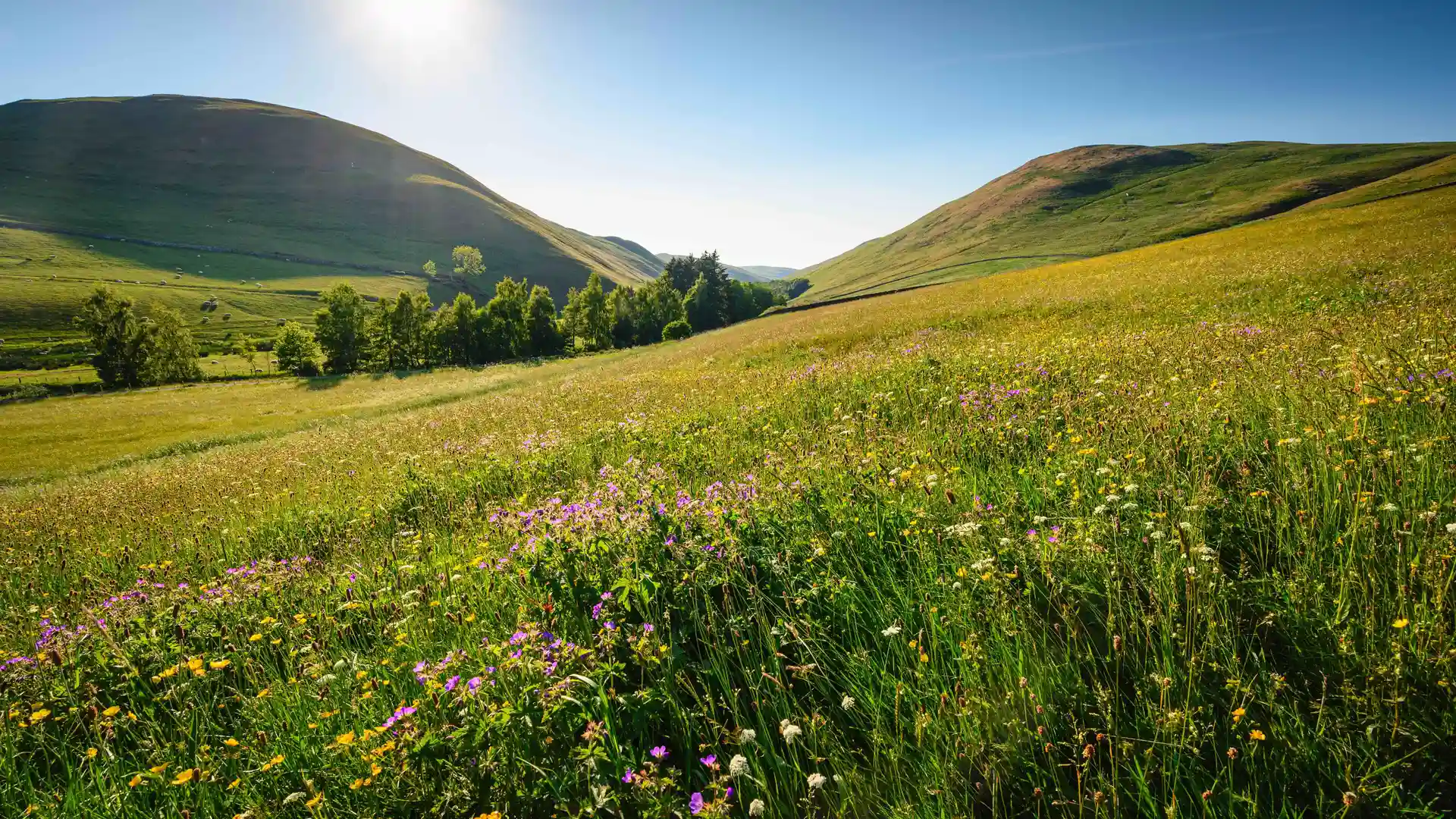

Where open skies meet deep history — and long-distance trails reveal some of England’s most spacious landscapes.
North East England is a region of dramatic contrasts: rugged coastline, high moorland plateaus, Roman frontier paths, quiet river valleys, and castle silhouettes rising from wild headlands. From the Northumberland National Landscape to the grassy ridges of the Cheviot Hills, this is one of England’s most atmospheric regions for walking holidays.
This is walking country with depth and story. Every trail carries a sense of time — Roman milecastles, medieval ruins, reiver history, and upland paths that feel unchanged for centuries. With fewer crowds and huge horizons, it’s ideal for slow, self-guided walking that favours space, silence, and scenery.
North East England is equally rewarding for outdoor adventures. Windswept coastal routes, upland ridge walks, river paths, and nature-rich headlands offer varied terrain for walkers seeking immersion and contrast in every season.
It’s also a great region for cycling holidays, with quiet coastline lanes, scenic inland loops, and long-distance rides such as the Coast & Castles Cycle Route. Whether you’re pedalling between villages or following former railway lines, the riding is gentle, scenic, and full of character.
And when the day slows, the region offers places to stay close to coast paths, upland trails, and rural market towns — from coastal inns in Bamburgh and Alnmouth to countryside B&Bs in Wooler, guesthouses in Alnwick, and walker-friendly pubs in the Durham Dales.
An 84-mile (135 km) National Trail crossing the Roman frontier from Wallsend to Bowness-on-Solway.
The North East section is the most iconic and dramatic: crag-top walking, open moorland, and historic forts such as Housesteads, Vindolanda, and Chesters. Expect big views, atmospheric ridgelines, and archaeology woven into every step.
A spectacular 62-mile (100 km) coastal route from Cresswell to Berwick-upon-Tweed.
Walk past Bamburgh Castle, Dunstanburgh Castle, Craster, Alnmouth, and the tidal causeway to Holy Island (Lindisfarne). This coastline delivers some of the quietest, longest beaches in England — perfect for sea air, wildlife, and camera-friendly landscapes.
Some of England’s wildest uplands, defined by grassy ridges, wide plateaus, and remote valleys.
Start from Wooler, Ingram, or Kirknewton for long, rolling summit days or easier valley loops. Ideal for walkers who crave solitude, stargazing, and open country.
An under-explored walking region of riverside meadows, heather moorland, waterfalls, and market towns.
Highlights include:
Gentler and quieter than the Yorkshire Dales, but full of character, history, and rural calm.
The two signature trails are Hadrian’s Wall Path and the Northumberland Coast Path, both offering a mix of history, scenery, and well waymarked routes.
Yes — but only at safe tide times. The tidal causeway floods twice daily, so always check tide tables before crossing. Once on the island, enjoy peaceful walking, monastic ruins, and coastal viewpoints.
Many routes are suitable for confident beginners. Though remote, the terrain is grassy and steady. Start from Wooler or Ingram for approachable ridge and valley loops.
Expect wildlife watching, stargazing, coastal kayaking, cycling (especially the Coast & Castles route), photography walks, and nature-rich coastal hikes. The Farne Islands offer world-class birdlife.
Top bases include Wooler, Alnwick, Bamburgh, Berwick-upon-Tweed, Alnmouth, and Middleton-in-Teesdale — with coastal inns, countryside B&Bs, moorland pubs, and walker-friendly guesthouses.